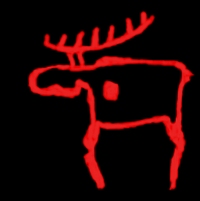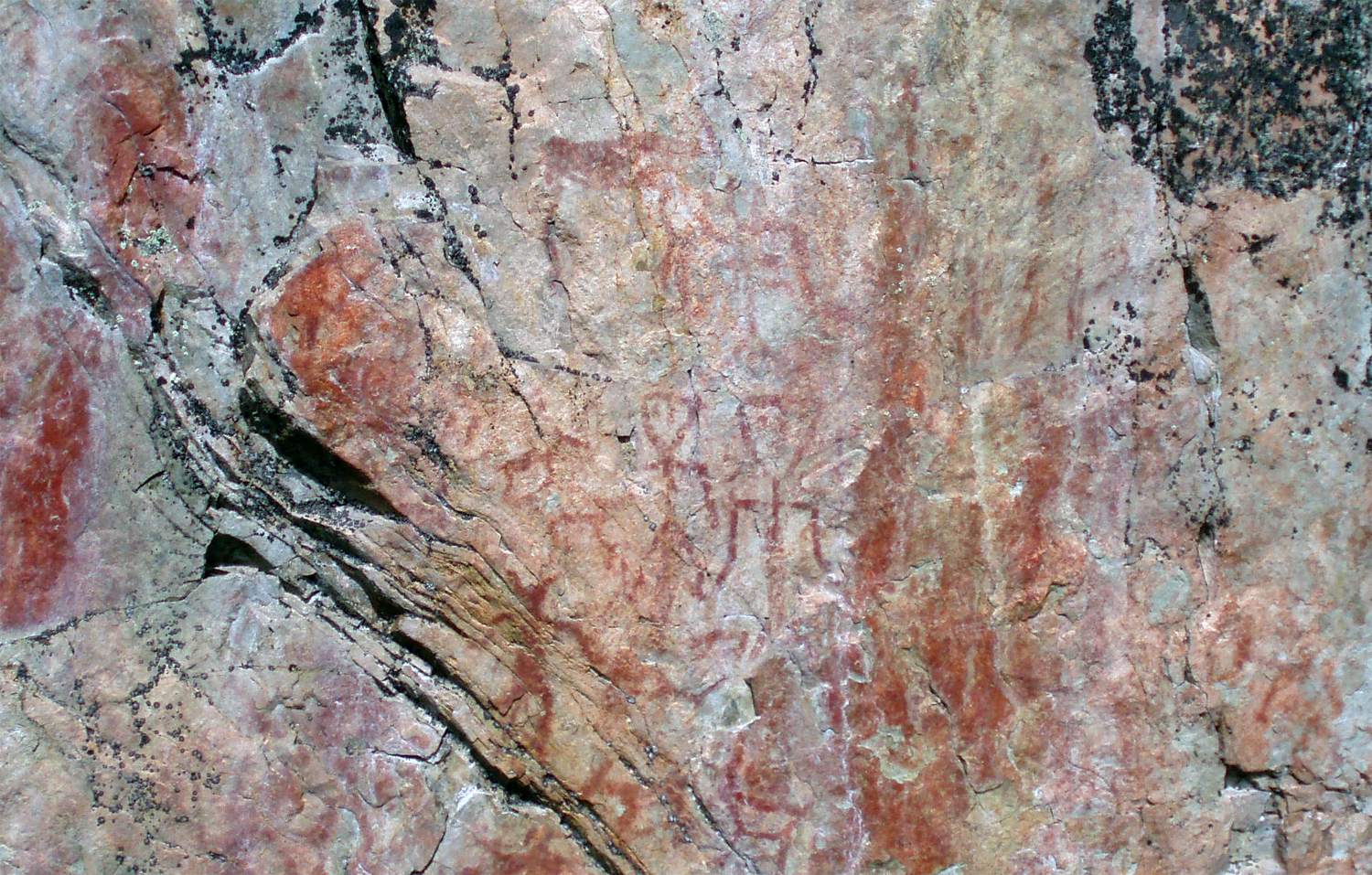|
Lempo
Lempo () is a demon from Finnish folklore and mythology. Lempo has been connected to the names Lemmes, Lemmas, Lemmätär and Lemmetär (), as well as themes of love and fire. The ''-tär'' ending names are feminine, but Lempo has also been understood as a male demon in some instances. Descriptions Christfried Ganander called Lempo a flying evil spirit who forged evil flying arrows; Lemmes a forest god or faun who planted the alder and is its protector; Lemmas a nymph who stirred iron after it was lifted from bogs; and Lemmetär or Lemmätär a smith maid who pulled the bellows when iron was made and shook trees with her breath. Matthias Castrén connected the name Lempo to the word ''lempi'' ("erotic love"). It was personalized as a capitalized Lempi in love spells. This ''lempi'' in spells could be a wild and raging feeling, like lust awoken by an evil witch, so Castrén thought a love god could've thus developed into an evil god. Elias Lönnrot connected the name to the Swe ... [...More Info...] [...Related Items...] OR: [Wikipedia] [Google] [Baidu] |
47171 Lempo
47171 Lempo, or as a binary (47171) Lempo–Hiisi (Minor planet provisional designation, provisional designation ), is a triple trans-Neptunian object in the Kuiper belt, located in the outermost regions of the Solar System. It was discovered on 1 October 1999, by American astronomers Eric P. Rubenstein, Eric Rubenstein and Louis-Gregory Strolger during an observing run at Kitt Peak National Observatory in Arizona, United States. Rubenstein was searching images taken by Strolger as part of their Nearby Galaxies Supernova Search project. It is classified as a plutino with a 2:3 orbital resonance, mean-motion resonance with Neptune and is among the brighter TNOs. It reached Apsis, perihelion in July 2015. This minor planet was named after Lempo from Finnish mythology. The system's other two components, Paha and Hiisi , were discovered in 2001 and 2007, respectively, and later named after Lempo's two demon cohorts, Paha and Hiisi. History Discovery The Lempo system was disco ... [...More Info...] [...Related Items...] OR: [Wikipedia] [Google] [Baidu] |
Finnish Mythology
Finnish mythology commonly refers of the folklore of Finnish paganism, of which a Finnish Neopaganism, modern revival is practiced by a small percentage of the Finnish people. It has many shared features with Estonian mythology, Estonian and other Baltic Finns, Finnic mythologies, but also with neighbouring Baltic mythology, Baltic, slavic mythology, Slavic and, to a lesser extent, Norse mythology, Norse mythologies. Finnish mythology survived within an oral tradition of mythical poem-singing and folklore well into the 19th century. Of the animals, the most sacred was the bear, whose real name was never uttered out loud, which was thought to be unfavorable to the hunt. The bear ("karhu" in Finnish) was seen as the embodiment of the forefathers, and for this reason it was called by many circumlocutions: ''mesikämmen'' ("mead-paw"), ''otso'' ("browed one"), ''kontio'' ("dweller of the land"), ''metsän kultaomena'' ("the golden apple of the forest"). It was not strictly seen as a ... [...More Info...] [...Related Items...] OR: [Wikipedia] [Google] [Baidu] |
Demon
A demon is a malevolent supernatural entity. Historically, belief in demons, or stories about demons, occurs in folklore, mythology, religion, occultism, and literature; these beliefs are reflected in Media (communication), media including fiction, comics, film, television series, television, and video games. Belief in demons probably goes back to the Paleolithic, Paleolithic age, stemming from humanity's fear of the unknown, the strange and the horrific.. In Religions of the ancient Near East, ancient Near Eastern religions and in the Abrahamic religions, including History of Judaism, early Judaism and ancient-medieval Christian demonology, a demon is considered a harmful spiritual entity that may cause Spirit possession, demonic possession, calling for an exorcism. Large portions of Jewish demonology, a key influence on Christianity and Islam, originated from a later form of Zoroastrianism, and was transferred to Judaism during the Achaemenid Empire, Persian era. Demons may ... [...More Info...] [...Related Items...] OR: [Wikipedia] [Google] [Baidu] |
Finnish Language
Finnish (endonym: or ) is a Finnic languages, Finnic language of the Uralic languages, Uralic language family, spoken by the majority of the population in Finland and by ethnic Finns outside of Finland. Finnish is one of the two official languages of Finland, alongside Swedish language, Swedish. In Sweden, both Finnish and Meänkieli (which has significant mutual intelligibility with Finnish) are official minority languages. Kven language, Kven, which like Meänkieli is mutually intelligible with Finnish, is spoken in the Norway, Norwegian counties of Troms and Finnmark by a minority of Finnish descent. Finnish is morphological typology, typologically agglutinative language, agglutinative and uses almost exclusively Suffix, suffixal affixation. Nouns, adjectives, pronouns, Numeral (linguistics), numerals and verbs are inflection, inflected depending on their role in the Sentence (linguistics), sentence. Sentences are normally formed with subject–verb–object word order, alth ... [...More Info...] [...Related Items...] OR: [Wikipedia] [Google] [Baidu] |
Finnish Gods
Finnish may refer to: * Something or someone from, or related to Finland * Culture of Finland * Finnish people or Finns, the primary ethnic group in Finland * Finnish language, the national language of the Finnish people * Finnish cuisine See also * Finish (other) * Finland (other) * Suomi (other) Suomi means ''Finland'' in Finnish. Suomi may also refer to: *Finnish language Finnish (endonym: or ) is a Finnic languages, Finnic language of the Uralic languages, Uralic language family, spoken by the majority of the population in Finla ... * {{disambiguation Language and nationality disambiguation pages ... [...More Info...] [...Related Items...] OR: [Wikipedia] [Google] [Baidu] |
Vellamo
Vellamo (), also spelled Wellamo, is the goddess of water, lakes and seas in Finnish mythology. She is called Veen emäntä (Mistress of Water). Vellamo is said to be tall and beautiful, and is much respected by fishermen, who pray to her for good fishing luck. Vellamo can also control the winds to help sailors, and she controls the storms and waves. Vellamo has magical cows that live on underwater fields. Sometimes, during the morning mist, she brings her cows above the surface to eat water hay. Vellamo wears a blue dress that is made from sea foam. Vellamo's husband is the Finnish sea god Ahti. In Finnish fishing spells, Vellamo and Ahti are asked to bring their cattle (fish) into fishing nets. The , which is located in the city of Kotka, Finland, is named after Vellamo. Name The name "Vellamo" has been theorized to come from the Finnish word ''velloa'', which means 'to churn', describing the movement of water and waves. Kaarle Krohn also thought the name could've originally ... [...More Info...] [...Related Items...] OR: [Wikipedia] [Google] [Baidu] |
Mielikki
Mielikki () is the Finnish goddess of forests and the hunt. She is referred to in various tales as either the wife or the daughter-in-law of Tapio (Metsän emäntä, Mistress of Forest or Metsän miniä Daughter-in-law of Forest), and the mother of Nyyrikki and Tuulikki. She is said to have played a central role in the creation of the bear. In a country where the forest was central to providing food through hunting, gathering and cattle grazing, it was thought very important to stay on her good side. She is also offered prayers by those who hunt small game and those who gather mushrooms and berries. Mielikki is known as a skillful healer who heals the paws of animals who have escaped traps, helps chicks that have fallen from their nests and treats the wounds of wood grouses after their mating displays. She knows well the healing herbs and will also help humans if they know well enough to ask her for it. The Mielikki Mons, a mountain on Venus, is named after her. Name Her n ... [...More Info...] [...Related Items...] OR: [Wikipedia] [Google] [Baidu] |
North Ostrobothnia
North Ostrobothnia (; ) is a Regions of Finland, region of Finland. It borders the Finnish regions of Lapland (Finland), Lapland, Kainuu, Northern Savonia, North Savo, Central Finland and Central Ostrobothnia, as well as the Russian Republic of Karelia. The easternmost corner of the region between Lapland, Kainuu and the Russian border is known as Koillismaa ("North-East Finland"). Historical provinces Municipalities The region of North Ostrobothnia consists of 30 municipalities of Finland, municipalities, 11 of which have city status (marked in bold). Map of municipalities Sub-regions Koillismaa, Koillismaa sub-region * Kuusamo * Taivalkoski Nivala-Haapajärvi sub-region * Haapajärvi * Kärsämäki * Nivala * Pyhäjärvi * Reisjärvi Oulu sub-region * Hailuoto * Kempele * Liminka * Lumijoki * Muhos * Oulu * Tyrnävä Oulunkaari, Oulunkaari sub-region * Ii, Finland, Ii * Pudasjärvi * Utajärvi * Vaala Raahe sub-region * Pyh ... [...More Info...] [...Related Items...] OR: [Wikipedia] [Google] [Baidu] |
Kainuu
Kainuu (), also historically known as Cajania (), is one of the 19 regions of Finland (''maakunta'' / ''landskap''). Kainuu borders the regions of North Ostrobothnia, North Savo and North Karelia. In the east, it also borders Russia (Republic of Karelia). Culturally Kainuu is part of larger Eastern-Finnish cultural heritage. The dialect of Kainuu resembles Savonian and Karelian dialects. Geography Boreal forest makes up most of the biome in Kainuu. The forest in Kainuu mostly consists of birches, pines and spruces. The atypical regional geography and landscape consist of lakes, hills and vast uninhabited forest areas. The largest lake in the region is the Oulujärvi (928.09 km2), one of the largest lakes in Finland. Its shorelines, open waters and islands in Kainuu belong to the municipalities of Paltamo and Kajaani. The highest point in Kainuu is the Iso Tuomivaara (385 m), located in the municipality of Hyrynsalmi. The regional climate is continental. The three mos ... [...More Info...] [...Related Items...] OR: [Wikipedia] [Google] [Baidu] |
Olonets Karelia
Olonets Karelia (; ; ) is a historical and cultural region and the southern portion of East Karelia, which is currently part of Russia. Olonets Karelia is located between the other historical regions of Ladoga Karelia, to its west, White Karelia, to its north, the River Svir, to its south and Lake Onega on its eastern side. Olonets Karelia is home to its own dialect of the Karelian language Karelian (; ; ; ) is a Finnic language spoken mainly by the Karelians, Karelian people in the Russian Republic of Karelia. Linguistically, Karelian is closely related to the Finnish language, Finnish dialects spoken in eastern Finland, and some ..., which is known as Livvi-Karelian language, Livvi Karelian or sometimes as 'Olonets Karelian'. The largest city in the Olonets Karelia region is Petrozavodsk, followed by Kondopoga, Segezha and Medvezhyegorsk. History Olonets Karelia has largely been under Russian control over the course of its history, despite its ethnic Karelian population; ... [...More Info...] [...Related Items...] OR: [Wikipedia] [Google] [Baidu] |
Kaarle Krohn
Kaarle Krohn (10 May 1863 – 19 July 1933) was a Finnish folklorist, professor and developer of the geographic-historic method of folklore research. He was born into the influential Krohn family of Helsinki. Krohn is best known outside of Finland for his contributions to international folktale research. He devoted most of his life to the study of the epic poetry that forms the basis for the Finnish national epic, the ''Kalevala''.Mary Ellen Brown Bruce A. Rosenberg Peter Harle Kathy Sitarski, ''Encyclopedia of Folklore and Literature'' 1998 Early life Krohn was born in Helsinki. He was the son of journalist and poet Julius Krohn, and his sisters were Finnish authors Aune, Helmi and Aino Kallas. Krohn is best known outside of Finland for his contributions to international folktale research. Krohn passed his matriculation exams in 1880, earned his candidacy degree in 1883 at University of Helsinki, and completed his doctorate in 1888. At the age of 18, he conducted field ... [...More Info...] [...Related Items...] OR: [Wikipedia] [Google] [Baidu] |





